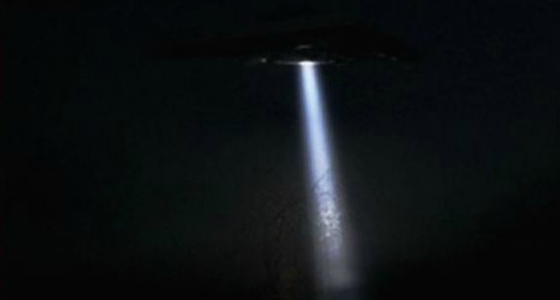Sometimes bits of ufological and related news catch my attention. Either due to my time/energy or interests, these may not be provocative enough to inspire a whole post, so, on such occasions, under the category “Sightings”, I at least try to leave some trace of the thoughts these ephemera did in fact prompt. This week, there are three…
“…the issue is entirely political…”
That the topic of UFOs (UAP) is charged is surely an understatement. As an element of Twentieth and Twenty-first Century world culture, the UFO hovers over fields from science to religion, national security to science fiction, and even politics, in various senses both popular and more philosophical, gets caught up and drawn into its vortex.
Amid the increasingly bigger media splash UFOs are making since the breakout New York Times articles is the appearance of the topic on CNN’s Cuomo Prime Time, where Sean Cahil and Christopher Mellon as well as Mick West were recently interviewed. Apart from the question of just what the videos in question actually show, that the so-called “mainstream media” is covering UAP (UFOs) prompted the following comment on a Facebook group I belong to: “this is no longer a scientific issue. Now that 60 Minutes has made UFOs mainstream the issue is entirely political. Already we have the left wing CNN vs. the right wing FOX News. Now Chris Cuomo vs. Tucker Carlson,” an angle on the politics of American media shared by Robert Sheaffer: “On the right, we have Tucker Carlson on Fox News, and the New York Post. On the left, we have the Washington Post and The New York Times.” (Though I’m unsure just how, e.g., Cuomo’s and Carlson’s views on the matter significantly differ …).
The commenter’s take is backed up by a relatively recent Gallup poll conducted in the first half of August 2019. published just this month (May 2021): “Which comes closer to your view: some UFOs have been alien spacecraft visiting Earth from other planets or galaxies, or all UFO sightings can be explained by human activity on Earth or natural phenomenon?” Again, apart from the unremarkable (if not problematic) question itself, what’s curious is the very first remark concerning the poll’s findings: “This is one topic on which Republicans and Democrats agree: 30% of the former and 32% of the latter describe UFOs as alien spacecraft from other planets. Belief is a bit higher among political independents, at 38%.”
That a topic, however “popular”, such as UFOs should get caught up in the cultural polarization that characterizes U.S. society presently in a social media comment is not too surprising, but when the question of an individual’s identifying as “Republican” or “Democrat” becomes a default question for, in this case, a Gallup poll, “politics” becomes an sign of a more grave, social malady. (With regard to the question of what someone believes about UFOs, why should party allegiance trump, e.g., education, religion, race, or income?). Clearly, UFOs are not political—a matter of social consequence—the way that gun, abortion, or voting rights are; it’s just that, in American media, any topic that catches its attention is immediately parsed in this all-too-familiar, polarized fashion.
There are, however, more profound senses in which the UFO is political, or, more properly, can be understood politically, i.e. ideologically. On the one hand, one can speak of Left or Right “ideologies”, the explicit set of beliefs and values adhered to by a group, the “everyday” (popular, vulgar) sense of the term. ‘Ideology’, however, denotes more usefully precisely those beliefs about society and its values that are unspoken and often shared across the (vulgar) political spectrum, assumptions that demarcate and maintain that social context within which differences, such as those between American Republicans and Democrats, play out…
On the one hand, Trotskyist Posadists and paranoid, right-wing reactionaries, such as Bill Cooper, both believe that UFOs are spaceships from a technologically-advanced, extraterrestrial civilization, but their (vulgar) ideological differences obscure the radically ideological content of the belief that UFOs are advanced, unearthly technology. The Extraterrestrial Hypothesis as such is ideological. As I formulated this thesis most recently:
However much technology is not essentially bound up with capitalism, it is the case that technology as we know it developed under capitalism as a means to increase profit by eliminating labour, a development that has only picked up steam as it were with the drive to automation in our present moment. When this march of progress is imagined to be as natural as the precession of the equinoxes, it is uncoupled from the social (class) relations that determine it, reifying the status quo. In this way, popular or uncritical speculations about technologically advanced extraterrestrial societies are arguably politically reactionary. But they are culturally, spiritually impoverishing, too. This failure, willed or otherwise, to grasp our own worldview as contingent legitimates if not drives the liquidation of human cultural difference and of the natural world. Identifying intelligence with one kind of human intelligence, instrumental reason, and narrowing cultural change to technological development within the lines drawn by the self-regarding histories of the “advanced” societies, we murderously reduce the wild variety of intelligence (human and nonhuman alike) and past, present, and, most importantly, potentially future societies to a dreary “eternal recurrence of the same,” a world not unlike those “imagined” by the Star Trek and Star Wars franchises wherein the supposed unimaginable variety of life in the cosmos is reduced to that of a foodcourt.
Something’s going on, but we don’t know what it is…
The recent media attention being paid to UAP focusses on videos and photographs all leaked from the U.S. Navy, whether 2015’s “Gimbal” and “Go Fast” videos, 2004’s “FLIR1” or “Tic Tac” video, the more recent “Pyramid” footage, or the “Metal Blimp w/ payload”, “Sphere”, and “Acorn” photographs (the featured image for this post, above) or now a video of a USO or “transmedium” vehicle from the USS Omaha. All these are problematic in two, provocative ways. First, none, on close examination, very persuasively show anything unusual let alone unearthly. The three photographs arguably picture party balloons (the Metal Blimp, a shark, and the Acorn, a Batman balloon) or something just out of focus (the Sphere). The Pyramid appears to be nothing more than a camera artifact. And the Gimbal, Go Fast, Tic Tac, and USS Omaha videos have their proposed mundane explanations, too. More troubling is how this video/photographic evidence is simultaneously officially stamped as “authentic” (taken by military personnel) but their provenance remains in the dark. So, many have posed the question as to why such unimpressive, officially-sanctioned “evidence” is being released, disseminated, and spun the way it is (among them, most recently, Andrew Follett).
From the first ripples of this splash (that gave us History’s Unidentified) to the present waves (or foam) of interest and commentary, the purported Unidentified Aerial Phenomena (UAP) have been presented as potential threats. Setting aside the proposals of Steven Greer and Michael Salla (…), that this spin is part of the preparation for a false flag alien invasion, others propose that the threat narrative is a way for the military industrial complex to secure greater support or funding. But this proposal is unconvincing, given the famously bloated defense budget of the U.S. that withstands every attempt to deflate it even a little. There’s already a Space Force, and, given that the threats posed by Russia, China, and even global warming are all officially acknowledged and monitored, what need would the Pentagon have to resort to such easily-debunked evidence of UAP incursions to make a case for itself? It’s precisely the shoddiness of the proffered “evidence” that seems to persuade only hardcore believers, themselves only a fraction of that roughly a third of Americans who will entertain the idea that UFOs are extraterrestrial spaceships, that gives me pause for thought. Even if these UAP are spun as earthly, foreign aerospace developments (as would seem to be suggested by the news about questionable patents for exotic propulsion systems, also part of the story), already-accepted real-world threats are hardly aggravated by unpersuasive video or photographic evidence, however “official”…
Time will tell, or, as is often the case when it comes to UFOs/UAP, it won’t, creating an abyss for neverending speculation to fill Google’s YouTube servers and swell the bookshelves of UFOphiles…
It’s just so much more complicated…
Finally, first in response to a blog post by Christ Rutkowski, then at the prompting of The Anomalist‘s Bill Murphy, I essayed some thoughts on the causes and character of the kind of thinking that goes into our post-truth iterations of New World Order, etc. conspiracy theorizing. I stand by the genealogy and the psychological and social aspects of the phenomenon I sketch, but, the matter being very complicated, I failed to remark two, essential dimensions. First, the disruption of our sensus communis has been undertaken by agents both domestic and foreign: there would be no “post-truth” crisis were it not for Trump and his ilk echoing, in their own farcical way, the Nazi rhetoric directed against die Lügenpresse and foreign (and now domestic) actors working to misinform and increasingly polarize the citizenry. More profoundly, the advent of digital and social media is overwhelmingly pertinent, both as a general condition governing the dissemination of information, both in terms of its content and velocity, and as the technology weaponized by the aforementioned actors. As well, I assumed anyone interested in the topic would be familiar with the ways that propaganda (from Operation Mockingbird to the Iraqi WMD scandal) and government secrecy (from Watergate to “deep events” such as the Kennedy Assassination and 9/11, among many other instances) had long tilled the soil for the crop we reap today.






